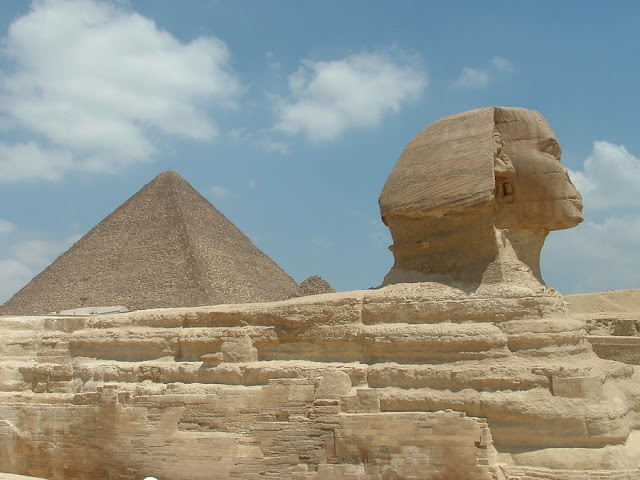Ten Of The Most Beautiful Places Of The World!!
We live in a world blessed with sights that are beautiful beyond words. Every human being probably dreams of visiting at least one of those places in their lifetime. Living in modern cities with high-rise buildings, we tend to miss out on what Mother Nature has to offer as well as some of the most incredible man-made structures built throughout the course of history.Look at the places below, and you will see beauty that fills the eye and warms the heart. It wouldn’t be appropriate or humanly possible to just pick a few places from the huge collection of amazing sights around the world and call them the “best.”
They say that “beauty is in the eye of the beholder,” and there are perhaps other places that have touched your heart. For this reason, we do not claim the places included in our list are the best, but rather among the vast collection of the most beautiful places of the world.
Skardu Valley – Pakistan
Skardu Valley is part of the Baltistan. Baltistan is spread over an area of 26,000 square kilometres – just right below the jagged and glaciated ramparts of the Karakoram. Once part of Laddakh, it was known as Tibet-i-Khurd – Little Tibet. Archaeological exploration has proven that it was encompassed by the Silk Trade Route.
Cape Town, South Africa
This is the most beautiful town of the Africa. Showing the most amazing nature one can ever think of. This depicts the architectural heritage , Its Rhodes Memorial and beaches are tourists attraction.
The Grand Canyon, United States
The great Barrier Reef, Australia
Machu Picchu, Peru
Taj Mahal, India
The Pyramids
Canadian Rockies
Great Wall of China
One of the seven wonders of the world, the Great Wall of China is a man-made structure that was constructed over two thousand years ago and took about 100 years to complete. The vastness of this project brings to light the immense capabilities of man.
THE JOURNAL HOME
ABOUT NATURE
Dentification of suspect substances depends on reference materials that are in short supply.
Attempts to understand and control new synthetic recreational drugs are being hindered by analysis laboratories' inability to obtain pure samples of the compounds, experts say.The growing problem of synthetic drugs — which include mimics of cannabis and amphetamine — came to the fore in the United Kingdom last year as politicians rushed to ban mephedrone, which had been linked in the media to several deaths. Mephedrone and several related compounds, known collectively as cathinones, are now controlled substances in the United Kingdom and in many other countries. But new drugs are already appearing that circumvent these bans.
Scientists think they can prove that free will is an illusion. Philosophers are urging them to think…
Venus would seem to be a tempting destination for planetary probes: conveniently close, and an extreme laboratory for atmospheric processes familiar on Earth. So why won't NASA send a mission there? That was the frustrated question coming from scientists at the annual meeting of NASA's Venus Exploration Analysis Group (VEXAG) near Washington DC on 30–31 August. They perceive an agency bias against Venus, a planet that hasn't seen a US mission since the Magellan probe radar-mapped its shrouded surface in the early 1990s, and which won't see one any time soon, after NASA this year rejected a bumper crop of Venus proposals.
Mental disorders affect more than a third of Europeans
Mental disorders affect more than 160 million Europeans — 38% of the population — each year, says a report1 issued today by the European Brain Council and the European College of Neuropsychopharmacology. Yet, fewer than a third of those affected receive treatment.Led by Hans-Ullrich Wittchen, a psychologist at the Technical University of Dresden in Germany, the three-year study covered the 27 countries in the European Union (EU) as well as Switzerland, Norway and Iceland. The researchers found that the most common disorders are anxiety, insomnia and depression, which account for 14%, 7% and 6.9% of the total, respectively.

Oil-spill research funds begin to flow
BP's Gulf of Mexico Research Initiative (GRI) announced today the first long-term grant recipients in its multimillion-dollar fund to support oil-spill research in the Gulf of Mexico. Eight consortia, all headed by Gulf-state universities, will receive a portion of US$112.5 million over the coming three years. The initiative promises to distribute a total of $500 million in Gulf research funds between now and 2020.
Stone tools shed light on early human migrations
The discovery of stone axes in the same sediment layer as cruder tools indicates that hominins with differing tool-making technologies may have coexisted.
The axes, found in Kenya by Christopher Lepre, a palaeontologist at Columbia University in New York, and his team are estimated to be around 1.76 million years old. That's 350,000 years older than any other complex tools yet discovered.Lizard genome unveiled
Publication of the genome of the North American green anole lizard has filled a yawning genome-sequence gap in the animal lineage. The paper, which appears today in Nature1, is the first to sequence the genome of a non-avian reptile. "This fills out a clade that has been completely ignored before," says lead author Jessica Alföldi of the Broad Institute of MIT and Harvard in Cambridge, Massachusetts.
7 Natural Wonders...of the Philippines
If you are fond of traveling and visiting other places, Philippines should be a part of your itinerary. You’ll find everything that you want here – beautiful places, delicious food and friendly people. You’ll definitely never run out of things to do (and see) here in my country.
As part of my countdown before hitting the second “hub” milestone (this is my 48th hub), I would like to present to the readers the natural wonders of the Philippines. There are many, believe me, but in the interest of space (and time), I have limited them to seven. These are by no means official but these are made by nature and are some of the top tourist destinations in my country. So read on and enjoy the pictures.
As part of my countdown before hitting the second “hub” milestone (this is my 48th hub), I would like to present to the readers the natural wonders of the Philippines. There are many, believe me, but in the interest of space (and time), I have limited them to seven. These are by no means official but these are made by nature and are some of the top tourist destinations in my country. So read on and enjoy the pictures.
Banaue Rice Terraces
Widely considered as the “Eighth Wonder of the World”, the Banaue Rice Terraces are already 2,000 years old. They were carved in the Ifugao mountains and were (are still, actually) used for planting rice and vegetables. These rice terraces were largely believed to be made by hand (with minimal or no equipment at all). Spanning about 4,000 miles, these rice terraces are said to go around half the globe if the “steps” are placed side by side. It is one of UNESCO’s World Heritage Site.
Tubbataha Reef
Mayon Volcano
The Hundred Islands
These hundred islands are located in Alaminos City, Pangasinan. The age of these islands? Approximately 2.0 million years old. They are actually “ancient corals that extend well inland”. Of all the islands, only three are actually developed for tourism: Governor Island, Quezon Island and Children’s Island. The islands cover about 18.44 square kilometers.
The Chocolate Hills
Another one of Philippine’s pride, this one is located in Bohol and is considered one of this place’s most famous attractions. The number of hills varies. Some say about 1,200 hills, others about 1,700 hills. Regardless of the number, the hills are, more or less, uniform in shape (about 30 to 50 meters). Why are they called chocolate hills? Because these hills are covered in grass, which during the end of the summer months, turn chocolate brown.
Tubbataha Reef
Another UNESCO World Heritage Site, the Tubbataha Reef is home to very beautiful corral reefs. It is located in Sulu Sea (about 150 kilometers southeast of Puerto Princesa City, Palawan) and houses a lot of marine creatures. The reef was declared a national marine park by the then-President Cory Aquino in 1988. It is open for divers from around the world from March to June of every year.
Mayon Volcano
Located in Legaspi City, this is one of the most active (if not the most active) volcano in the country. It is known for its near-perfect cone and is also the mountaineers’ favorite because of the challenge of climbing this volcano. Seen near the volcano is the bell tower of the church of the town of Cagsawa, the only reminder of its most destructive eruption on Feb. 1, 1814.
The Hundred Islands
These hundred islands are located in Alaminos City, Pangasinan. The age of these islands? Approximately 2.0 million years old. They are actually “ancient corals that extend well inland”. Of all the islands, only three are actually developed for tourism: Governor Island, Quezon Island and Children’s Island. The islands cover about 18.44 square kilometers.
Taal Volcano
Another one of the active volcanoes in the country, Taal Volcano is located between the towns of Talisay and San Nicolas in Batangas. It is considered an island inside Taal Lake, a body of water surrounding the volcano which is actually believed to be a former crater or mouth of a larger volcano. It is part of the Pacific Ring of Fire, making it very volatile. The volcano has become a very famous tourist spot; as a result, various establishments have been set up surrounding the lake. Due to its proximity to these establishments and human activities, the volcano is kept under close, tight watch for any signs of volcanic activities.The Chocolate Hills
Another one of Philippine’s pride, this one is located in Bohol and is considered one of this place’s most famous attractions. The number of hills varies. Some say about 1,200 hills, others about 1,700 hills. Regardless of the number, the hills are, more or less, uniform in shape (about 30 to 50 meters). Why are they called chocolate hills? Because these hills are covered in grass, which during the end of the summer months, turn chocolate brown.
Mount Makiling (or Mount Maquiling)
This one is a “dormant” or potentially-active volcano. Located in Laguna, it is one of the most popular destinations for hikers. There are actually roads going up this mountain but if you really want to see its beauty, you have to veer away from these roads and hike on foot. This mountain has a lot of hot springs inside, which are the source of the hot spring resorts surrounding the mountain. Part of Mount Makiling is located in the University of the Philippines, the premier university of the country and one of the designated caretakers of this lovely mountain. From afar, the mountain looks like a reclining lady, said to be Maria Makiling, the “guardian” of the mountain.






























